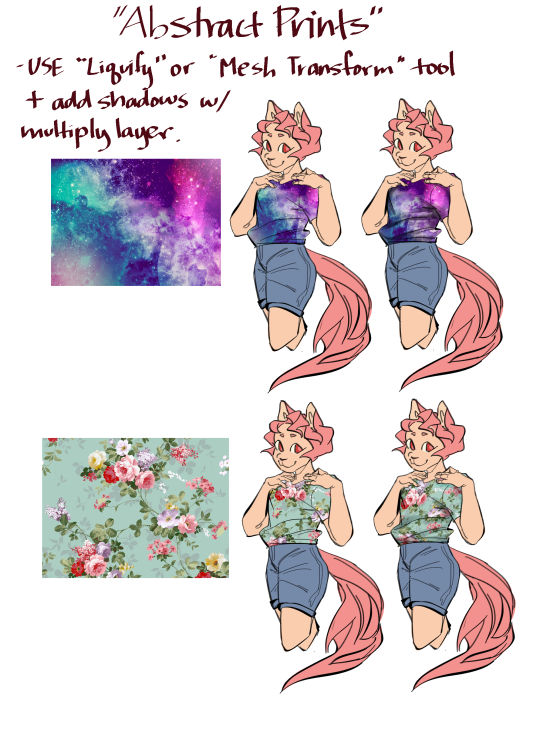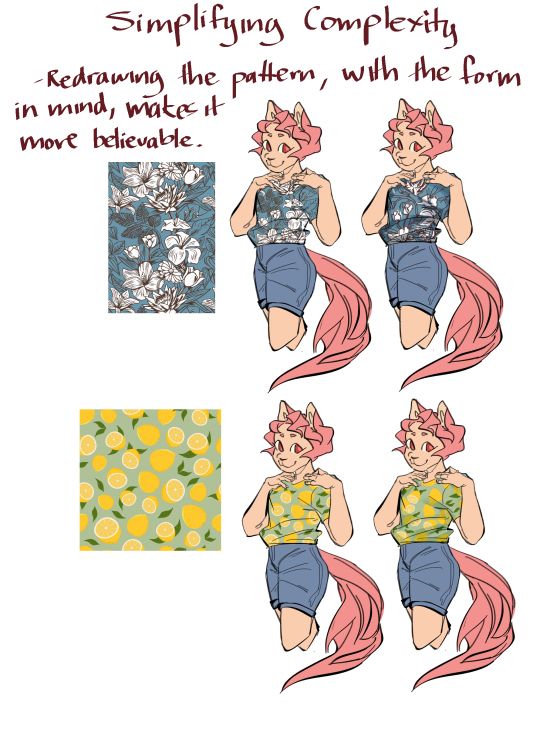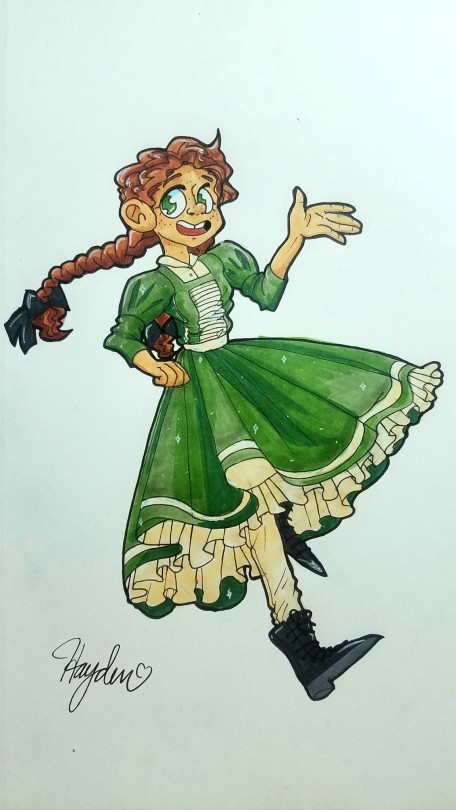Hi anon! It’s all a matter of following the form when you’re laying the patterns on. You have to visualize the folding of the clothing in 3D space and how that is going to distort the patterning.

For more abstract prints, if you can’t easily replicate the pattern, you can use an image you find online. This is usually where I see artwork fall flat, because just overlaying the image isn’t enough. Manually distort the image, scrunching it up where the folds are denser, and stretching it to face the right way.
Adding a prominent shadow and shading to the creased areas also makes the clothing more believable.

When the print is complex, but not so much that you can’t replicate it, I still recommend redrawing rather than trying to mold the original image, because redrawing it will allow you to make decisions while you draw, and ultimately it will be more believable and time-effective. It’s much easier to study than to cheat, after all! (This is a joke. Using and modifying pattern and print isn’t cheating, it’s just another form of using the tools.)

I hope this helped a bit! You can also play with line color. Coloring the lines within the clothing can help it integrate with the object, rather than having black lines that don’t mesh with the pattern so well.
-Mod Future (ko-fi)
from The Redline Station https://ift.tt/2MnZ46G
via IFTTT

No comments:
Post a Comment